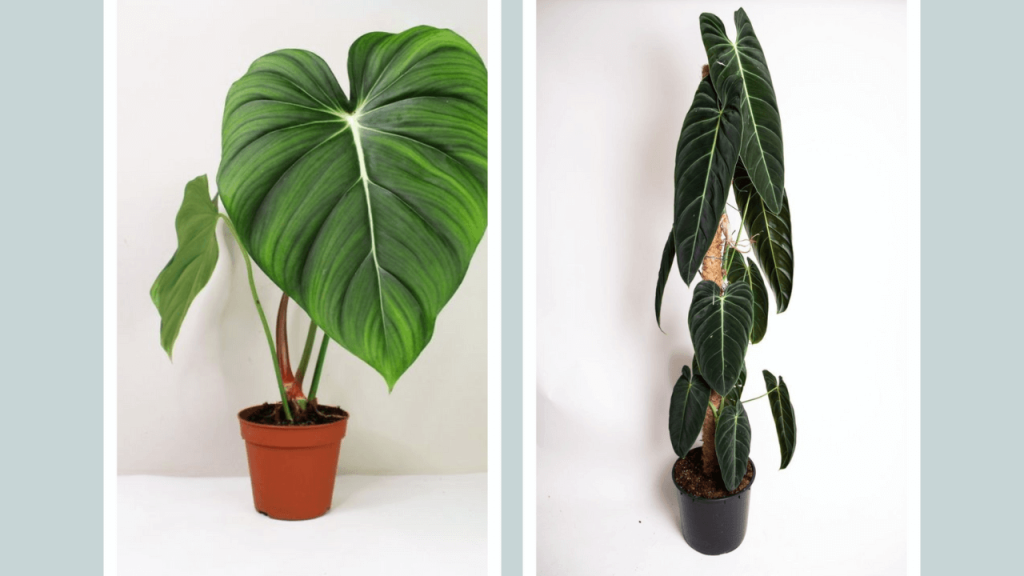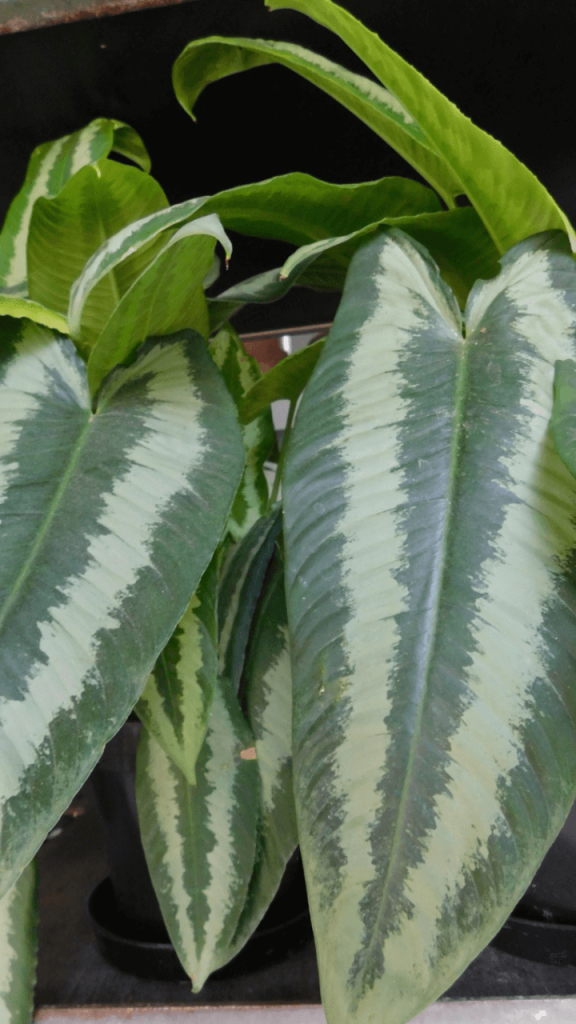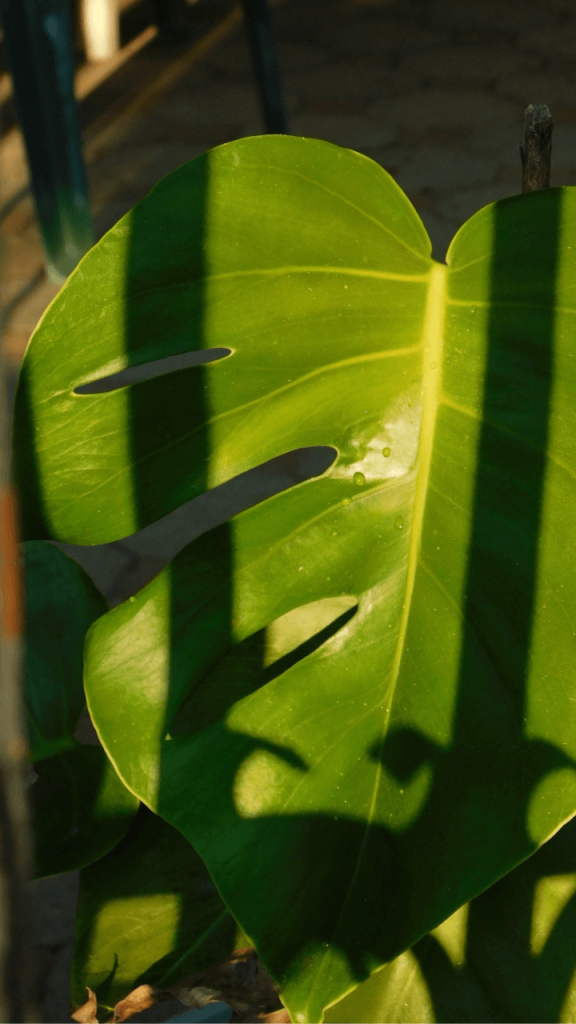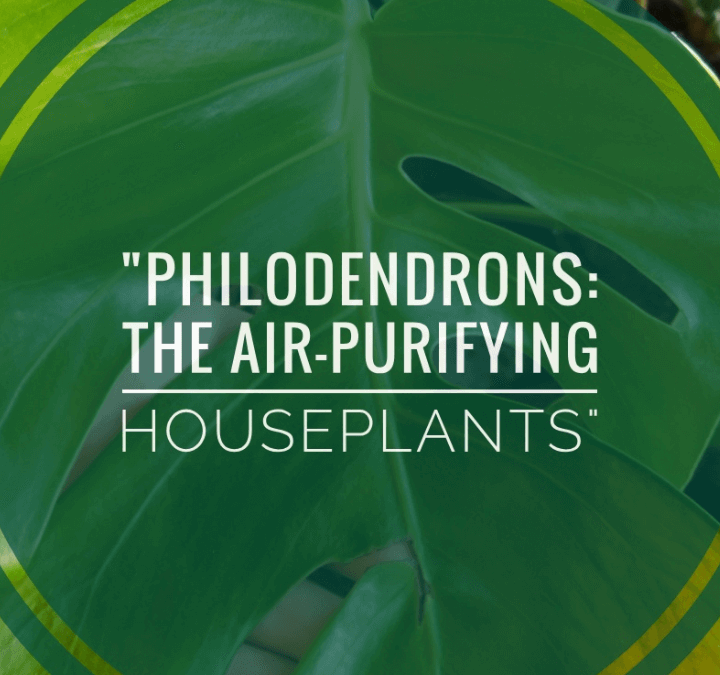Philodendrons, beloved for their stunning foliage and air-purifying abilities, have become a favored houseplant among enthusiasts. These tropical treasures hail from the lush regions of the Americas and proudly belong to the esteemed Araceae family, which boasts other renowned houseplants such as pothos and peace lilies. We appreciate the elegance and vitality that philodendrons bring to indoor spaces, making them an excellent choice for plant lovers seeking both aesthetic appeal and cleaner air.
The initial encounter with philodendrons dates back to the 16th century when Spanish explorers encountered these remarkable plants in South America. Since that momentous discovery, philodendrons have captivated people worldwide, earning their esteemed status as a beloved houseplant.
Renowned for their striking beauty, effortless maintenance, and remarkable ability to purify the air, philodendrons have secured a place in the hearts and homes of plant enthusiasts everywhere. We recognize the enduring appeal of philodendrons and appreciate their contributions to indoor spaces, bringing nature’s charm and environmental benefits into our daily lives.
Explanation of the benefits of having houseplants:
Houseplants are an invaluable addition to any home, providing many benefits that enhance both our well-being and the overall atmosphere of our living spaces. One notable houseplant variety that stands out for its exceptional air-purifying capabilities is the philodendron.
We recognize the significance of clean and healthy indoor air, and philodendrons have proven to be an excellent choice for improving air quality within the confines of a home. With their natural talent for removing pollutants and toxins from the air, philodendrons create a fresher and more invigorating environment, contributing to a healthier and more harmonious living space.
By embracing the remarkable air-purifying qualities of philodendrons, homeowners can reap the rewards of improved air quality while simultaneously enjoying the visual appeal and tranquility that these plants bring to their indoor surroundings.
The Science Behind Air Purification
Plants, from an arborist’s perspective, play a crucial role in the purification of the air by harnessing the power of photosynthesis. Through this remarkable process, plants effectively remove carbon dioxide and various pollutants present in the air and convert them into life-sustaining oxygen.
This natural exchange not only replenishes the oxygen levels but also helps in mitigating the harmful effects of air pollution. Furthermore, plants act as natural filters, adeptly absorbing volatile organic compounds (VOCs) through their leaves and roots.
By doing so, they actively contribute to reducing the levels of these harmful substances in the surrounding air. We deeply appreciate the invaluable role that plants play in cleansing the air, creating healthier and more vibrant environments for all living beings.
List of harmful toxins and pollutants that can be found in homes:
Awareness about the detrimental impact of certain household items on indoor air quality is growing. Many commonly used products in our homes, like cleaning agents, furniture, and even air fresheners, contain many harmful chemicals. When released into the air, these substances significantly contribute to indoor air pollution.
The consequences of such pollution are serious, ranging from persistent headaches and allergies to more serious respiratory ailments. Recognizing the importance of a clean and healthy indoor environment, we must be mindful of the products we bring into our homes and their potential impact on our well-being.
We advocate for promoting a harmonious coexistence between humans and nature, fostering indoor spaces free from harmful pollutants and conducive to overall health and vitality.
Explanation of how philodendrons specifically purify the air:
With their impressive foliage, Philodendrons play a vital role in purifying the air by effectively absorbing volatile organic compounds (VOCs) and various pollutants. We appreciate the unique qualities of philodendrons that make them exceptional air purifiers.
Their large, lush green leaves have remarkable capabilities for absorbing and filtering out harmful substances from the air we breathe. Notably, philodendrons excel in removing pollutants such as formaldehyde, benzene, and trichloroethylene, commonly found in indoor environments.
By incorporating philodendrons into your home, you can enhance the air quality significantly and create a healthier living space for yourself and your loved ones. Their natural ability to mitigate the impact of these pollutants makes philodendrons a commendable choice for individuals seeking to improve their indoor air quality.
Types of Philodendrons

We appreciate the diverse range of philodendron species, each possessing its own distinct characteristics and growth patterns. Among the numerous types available, some of the most prevalent include the Heartleaf philodendron (Philodendron hederaceum), the Selloum philodendron (Philodendron bipinnatifidum), the Brasil philodendron (Philodendron hederaceum ‘Brasil’), and the Xanadu philodendron (Philodendron bipinnatifidum ‘Xanadu’).
The Heartleaf philodendron showcases its beauty through heart-shaped leaves, making it a popular choice for indoor settings. Selloum philodendron, on the other hand, features large, deeply-lobed leaves that create an impressive and tropical appearance. The Brasil philodendron stands out with its striking variegated foliage, adorned with vibrant shades of green and yellow, adding a touch of color to any space. Lastly, the Xanadu philodendron forms a compact and bushy habit, with deeply cut leaves that create an attractive, dense display.
Each philodendron variety offers its unique charm and growth habit, allowing individuals to select the perfect species to suit their preferences and indoor environments. By exploring the diverse options available, you can find a philodendron that not only thrives in your space but also adds a touch of natural beauty and elegance to your home or office setting.
Explanation of the differences between types:
We appreciate the distinct leaf characteristics exhibited by different types of philodendrons. Each species showcases its own unique leaf shape, color, and size, adding to the diversity and allure of these plants. Let’s explore a couple of examples:
The Heartleaf philodendron (Philodendron hederaceum) displays charming, small leaves in the shape of hearts. These leaves grow along long, trailing vines, gracefully cascading and providing an elegant touch to any space. Their vibrant green color and delicate form make them a favorite choice for indoor settings, where they can be displayed in hanging baskets or allowed to climb on supports.
In contrast, the Selloum philodendron (Philodendron bipinnatifidum) presents large, deeply lobed leaves that grow from a single stem. These leaves boast an impressive size and feature a distinct pinnate structure, creating a bold and tropical appearance. The lush foliage of the Selloum philodendron can serve as a focal point in larger spaces, bringing a touch of drama and natural beauty to any room.
By appreciating the unique leaf characteristics of each type of philodendron, we can select the perfect variety to suit our preferences and create visually captivating indoor environments. Whether you desire the delicate beauty of heart-shaped leaves trailing gracefully or the bold presence of large, lobed foliage, philodendrons offer a range of options to meet your aesthetic aspirations.
Caring for Philodendrons
We have a deep understanding of the specific environmental requirements that philodendrons thrive in. Philodendrons are well-suited to bright, indirect light, which mimics the dappled sunlight they receive in their natural tropical habitats. Placing them near a window with filtered light or providing them with artificial light sources can ensure they receive the optimal amount of light for their growth.
When it comes to soil, philodendrons prefer well-draining soil that allows excess water to flow away easily. This helps prevent waterlogged roots and potential issues like root rot. A combination of peat moss, perlite, and other organic materials can create a suitable soil mix for philodendrons, ensuring adequate drainage while retaining moisture.
Philodendrons thrive in warm temperatures, typically ranging between 65-85°F (18-29°C). These plants originate from tropical regions, so they appreciate the warmth and humidity commonly found in such climates. Maintaining a temperature within this range can provide the ideal growing conditions for philodendrons.
It’s important to protect philodendrons from drafts, as sudden changes in temperature or exposure to cold air currents can stress the plant and hinder its growth. Temperatures below 50°F (10°C) can be detrimental to philodendrons and should be avoided to prevent damage to the plant’s foliage and overall health.
Understanding and providing philodendrons’ specific light, soil, and temperature requirements will ensure their well-being and promote healthy growth. By replicating their natural tropical environment, we can create a nurturing and suitable habitat for these beautiful plants in our homes.
Explanation of how to care for philodendrons:
We understand the importance of providing proper care for philodendrons to ensure their vitality and long-term health. When it comes to watering these plants, it’s crucial to strike a balance. Regular watering is necessary, but overwatering should be avoided. Allowing the soil to slightly dry out between waterings prevents waterlogging and promotes optimal root health.
It’s important to monitor the moisture level of the soil by checking its dryness with your finger. When the top inch of soil feels dry, it’s an indication that it’s time to water the philodendron. During watering, it’s advisable to provide enough water to thoroughly moisten the soil, allowing excess water to drain freely from the pot. This prevents the roots from sitting in stagnant water, which can lead to root rot and other issues.
Philodendrons benefit from regular fertilization during the active growing season to support their growth and foliage development. Applying a balanced, water-soluble fertilizer every 2-3 weeks can provide the necessary nutrients for healthy and robust philodendron growth. Following the manufacturer’s instructions regarding dosage and application is crucial to avoid overfertilization, which can cause fertilizer burn and damage the plant.
By providing appropriate watering and fertilization practices, we can ensure that philodendrons receive the necessary moisture and nutrients for their optimal growth. This level of care contributes to their overall well-being and ensures they remain vibrant and thriving houseplants.
Tips for keeping philodendrons healthy:
We have a deep understanding of the care requirements necessary to maintain healthy and thriving philodendrons. In addition to proper watering and fertilization, there are a few other essential practices to ensure the well-being of these plants.
Periodic pruning is a vital aspect of philodendron care. Removing dead, yellowing, or damaged leaves not only enhances the overall appearance of the plant but also stimulates new growth. Pruning should be performed using clean and sharp pruning shears, making clean cuts just above the nodes or leaf junctions. This promotes the development of new shoots and maintains the plant’s vitality.
Maintaining clean and dust-free leaves is also crucial for philodendron health. Dust accumulation on the leaves can hinder their ability to photosynthesize properly, impacting the plant’s overall growth and vigor. Regularly wiping the leaves with a soft, damp cloth or gently spraying them with water can help remove dust and ensure optimum leaf function.
Additionally, it’s important to monitor the plant for any signs of pests or diseases. Common pests that may affect philodendrons include mealybugs, spider mites, and scale insects. Regularly inspecting the leaves and stems can help identify any infestations early on, allowing for prompt treatment and prevention of further damage.
By following these care tips, philodendron enthusiasts can maintain the health and vibrancy of their plants. This diligent care ensures that philodendrons continue to thrive, purify the air, and contribute to the overall beauty and well-being of their indoor environment.
Incorporating Philodendrons into Home Decor

We appreciate the aesthetic appeal that philodendrons bring to indoor spaces. Their large, lush leaves showcase nature’s beauty, adding tropical elegance to any room. Philodendrons effortlessly blend in with contemporary, rustic, or traditional decor styles, enhancing the overall ambiance.
The impressive foliage of philodendrons captivates the eye and brings tranquility and serenity to the surroundings. The rich green color and distinct leaf shapes create a striking visual impact, infusing the space with vibrant and natural allure. Whether as a standalone centerpiece or part of a collection of indoor plants, philodendrons transform any space into a lush oasis.
Philodendrons’ versatility in design allows adaptation to various interior styles and arrangements. For a tropical paradise, you can combine philodendrons with other tropical plants like palms or bromeliads to create an indoor jungle. Alternatively, philodendrons can stand alone as a statement piece, commanding attention with their grandeur and elegance.
In addition to their aesthetic charm, philodendrons offer other benefits. They purify indoor air from harmful pollutants and increase oxygen levels. Their presence reduces stress, improves focus, and promotes well-being. With their versatility and positive impact on indoor environments, philodendrons have earned their place as beloved houseplants among nature enthusiasts and interior designers.
By incorporating philodendrons into your indoor spaces, you can elevate the visual appeal and create a serene atmosphere. These remarkable plants not only beautify your home but also benefit your well-being and the health of your indoor environment.
Tips for incorporating philodendrons into home decor:
We appreciate the various ways in which philodendrons can be seamlessly integrated into home decor, adding a touch of natural beauty and enhancing the overall ambiance. The versatility of philodendrons allows for endless possibilities when incorporating them into different design arrangements.
One popular method is to showcase philodendrons in decorative pots or baskets, which provide a functional home for the plant and serve as stylish accents in the room. Placing them on tables or shelves allows easy admiration of their lush foliage and creates a refreshing green focal point. The contrast between the vibrant leaves and the container can further elevate the visual appeal, whether you opt for modern, rustic, or classic designs.
Hanging philodendrons using macrame plant hangers is an excellent choice for those seeking to maximize space or add a touch of whimsy. Suspended from the ceiling, these cascading plants create a captivating display as their foliage gracefully spills downward, infusing the room with a natural charm. This method is particularly suitable for smaller spaces or for incorporating greenery in areas with limited floor or surface space.
Philodendrons can be elegantly placed on plant stands to add height and dimension to a room. These elevated platforms provide an opportunity to showcase the beauty of the plant at eye level, making it a captivating focal point and drawing attention to its remarkable foliage.
Regardless of the chosen method, it is vital to consider philodendrons’ lighting and space requirements. They thrive in bright, indirect light, so placing them near windows or in well-lit home areas is ideal. It’s also important to ensure that the chosen display method allows for proper air circulation and room for growth, as philodendrons are known for their vigorous and sprawling nature.
Explanation of how philodendrons can be used in different rooms:
We understand the versatility of philodendrons and their ability to thrive in various rooms throughout the house, contributing to both the visual appeal and overall well-being of the occupants. Whether it’s the living room, bedroom, or bathroom, philodendrons can significantly enhance the atmosphere and create a harmonious living environment.
Philodendrons can be strategically placed in the living room to serve as captivating focal points or decorative accents. Their lush foliage and attractive leaf patterns draw attention and infuse the space with a natural beauty. They can be positioned near windows or in well-lit areas to take advantage of their preferred bright, indirect light conditions. Incorporating philodendrons into the living room decor adds an element of freshness and vitality, making the space more inviting and visually appealing.
In the bedroom, philodendrons contribute to creating a tranquil environment. Their calming presence and ability to improve air quality make them ideal companions for rest. Placing a philodendron on a bedside table or near a cozy reading nook can enhance the overall ambiance, promoting a sense of tranquility and connection to nature. As they release oxygen during the day and help regulate humidity, philodendrons can contribute to a more restful sleep and a refreshing start to the day.
The bathroom, often a space associated with cleanliness and sterility, can greatly benefit from introducing philodendrons. These plants can purify the air, reducing harmful toxins and adding a touch of greenery to an otherwise utilitarian space. Their presence can help create a more inviting atmosphere, turning the bathroom into a mini oasis. Philodendrons that thrive in lower light conditions, such as the Heartleaf philodendron, can be well-suited for bathrooms with limited natural light.
By incorporating philodendrons into their home decor, readers can transform their living spaces into havens of beauty and well-being.
Where to Buy Philodendrons

We understand the importance of selecting the right source when purchasing philodendrons, as it can greatly impact the overall health and quality of the plants. There are various options to acquire philodendrons, ranging from local nurseries to online retailers and large retail stores such as Home Depot or Lowe’s. Readers need to consider their requirements and preferences to decide where to obtain their philodendrons.
Local nurseries offer several advantages when purchasing philodendrons. They typically have a wide selection of plants, including different varieties of philodendrons, and knowledgeable staff who can provide expert advice and guidance. Visiting a local nursery allows customers to personally inspect and choose healthy, well-maintained plants. Additionally, supporting local businesses helps to foster the growth of the local horticultural community and ensures a more personalized experience.
Online retailers provide convenience and accessibility for those who may not have access to local nurseries or prefer the convenience of shopping from home. They offer a wide range of philodendron varieties and often provide detailed descriptions and customer reviews to aid in the selection process. However, choosing reputable online retailers prioritizing quality and safe shipping practices is crucial to ensure that the plants arrive in optimal condition.
When selecting a source to purchase philodendrons, readers should consider factors such as the variety and quality of plants available, the expertise and support provided by the seller, and their own personal preferences. Whether it’s the hands-on experience and guidance of a local nursery, the convenience and variety offered by online retailers, or the accessibility and affordability of big box stores, the choice ultimately depends on the specific needs and preferences of the individual. By carefully considering these factors, readers can make an informed decision and obtain philodendrons that will thrive and bring beauty to their indoor spaces.
Advantages and disadvantages of each source:
We recognize the various advantages and considerations associated with different sources when it comes to purchasing philodendrons. Local nurseries, online retailers, and big box stores each have their own unique characteristics that readers should take into account before making a decision.
Local nurseries are often known for their wide selection of philodendrons and their knowledgeable staff. They offer a more personalized experience, providing expert advice and assistance in choosing the right plants. However, it is important to note that the prices at local nurseries may be higher compared to other sources due to factors such as their specialized inventory and the level of service they provide.
Online retailers offer the convenience of browsing and purchasing philodendrons from the comfort of one’s home. They typically provide a wider selection of philodendron varieties and competitive prices. However, readers should be aware of potential drawbacks, such as the smaller size of the plants and the risk of shipping damage. Choosing reputable online retailers with a track record of delivering healthy plants and employing proper packaging and shipping practices is crucial.
When deciding where to purchase philodendrons, readers should consider their budget, the specific philodendron varieties they desire, and their preference for personalized service or convenience. Each source has its own trade-offs, and the choice ultimately depends on individual priorities. By carefully evaluating these factors, readers can make an informed decision and acquire philodendrons that will thrive in their home environments.
Tips for choosing a reputable seller:
We emphasize the significance of selecting a reputable seller when purchasing philodendrons to guarantee the health and well-being of the plants. Readers should prioritize sellers who have a positive reputation and a proven history of supplying quality plants. This can be determined through thorough research, including reading reviews and seeking recommendations from trusted sources.
Inspecting the plants before making a purchase is a crucial step in ensuring their overall health and condition. Readers should carefully examine the philodendrons for any signs of pests, diseases, or damage. Healthy plants should exhibit vibrant foliage, without any browning, yellowing, or wilting leaves. The stems should be sturdy, and the roots should appear well-established and free from rot or decay. It is also advisable to inquire about the care and maintenance history of the plants to ensure they have been properly tended to.
By conscientiously considering their options and selecting a reputable seller, readers can acquire high-quality philodendrons that are in optimal health. These healthy plants will thrive in their homes, providing the desired benefits of air purification and aesthetic appeal.
Conclusion
Philodendrons are a testament to the harmonious blend of aesthetic beauty and environmental practicality. These houseplants, originating from the lush regions of the Americas and part of the esteemed Araceae family, not only enhance our living spaces with their stunning foliage but also play a significant role in purifying the air we breathe.
Their ability to absorb harmful toxins and pollutants, transforming them into fresh oxygen, underscores their importance in creating healthier indoor environments. The diverse range of philodendron species, each with unique leaf patterns and growth habits, offers a variety of options for indoor gardeners, catering to different tastes and spaces.
The simple care requirements of philodendrons make them accessible to novice and experienced plant enthusiasts, allowing anyone to enjoy their benefits. Whether incorporated into home decor for their tranquil presence or chosen for their air-purifying qualities, philodendrons are a superb choice for enhancing both the aesthetic and health aspects of our homes.
The rich history, ease of care, and environmental benefits associated with philodendrons make them an invaluable addition to any indoor space, embodying a perfect synergy of natural beauty and practical functionality.
FAQ About Philodendrons
Yes, Philodendrons are known for their air-purifying capabilities. They can absorb and neutralize certain toxins like formaldehyde and benzene, making them beneficial for indoor air quality.
Yellowing leaves can be a sign of overwatering or poor drainage. Ensure your Philodendron is not sitting in water and the soil has the chance to dry out between waterings.
Yes, Philodendrons thrive in a humid environment, similar to their native tropical habitat. Regular misting, a pebble tray, or a humidifier can help increase humidity levels.
A balanced, water-soluble houseplant fertilizer is ideal for Philodendrons. Apply it monthly during the growing season, following the instructions on the label for dilution and frequency.

